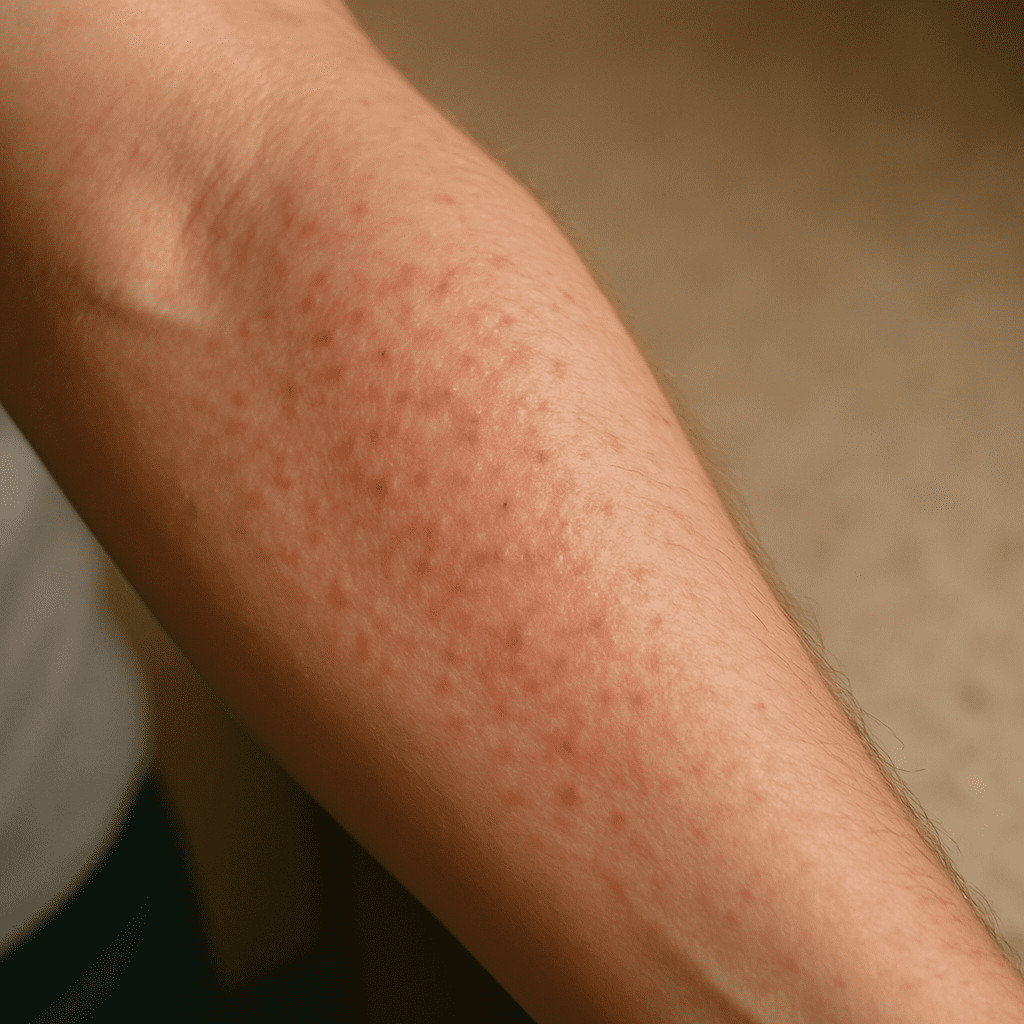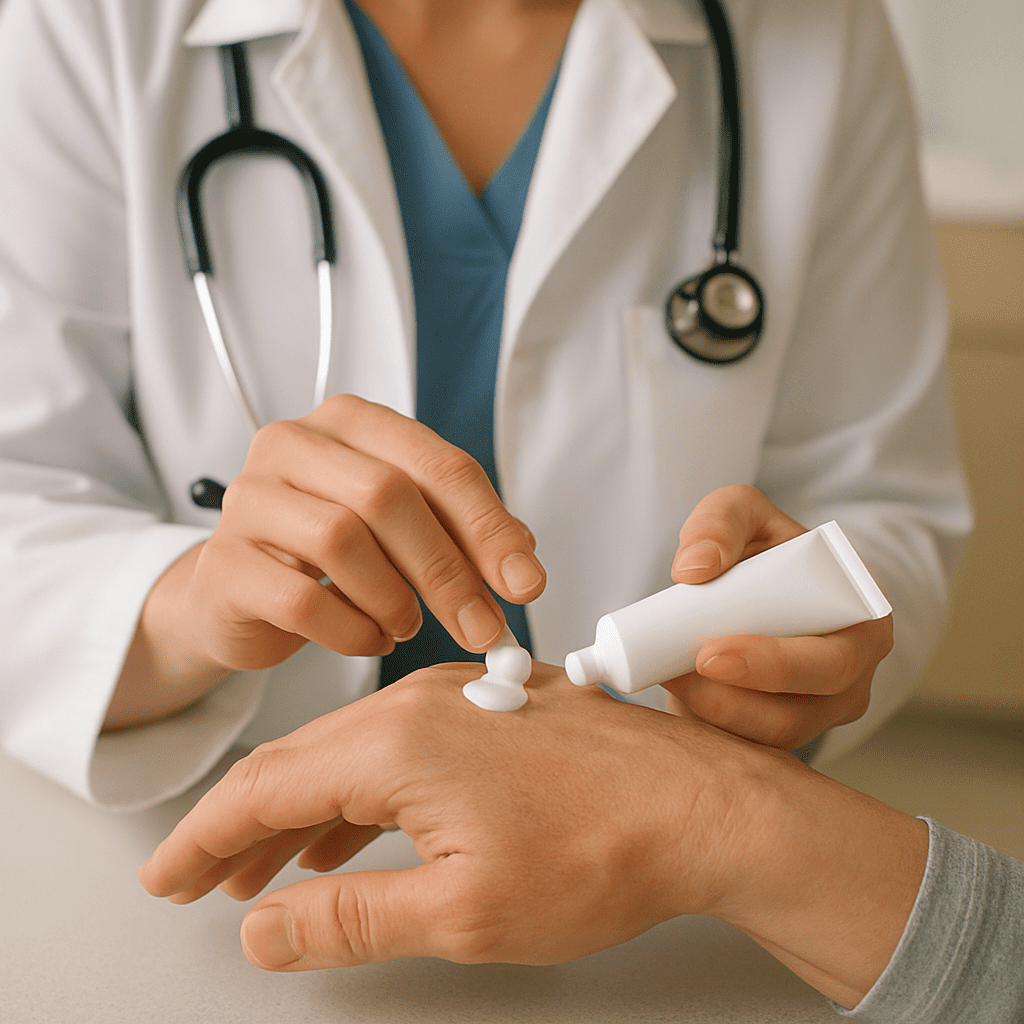Searching for ways to manage a rash during cancer treatment can feel overwhelming, especially if you’re worried about potential interactions between chemotherapy drugs and vitamin supplements. Many people hear conflicting opinions about whether vitamin C might worsen skin issues or cause additional side effects.
Through our latest research and clinical insights, we’ve discovered key information that can ease your concerns. In this article, we’ll explore why a rash may appear, how chemotherapy sometimes contributes to these skin changes, and what role vitamin C could play.
By the end, you’ll gain clarity on what to discuss with your healthcare professional and how to keep your skin healthier throughout your cancer care journey.
Quick Answer: Does Vitamin C Cause a Skin Rash with Chemotherapy?
- No clear evidence of increased rash risk: Most studies do not show that vitamin C (ascorbic acid) worsens rash or allergic contact dermatitis during chemotherapy treatment.
- Possible protective effect: High-dose vitamin C therapy (often given as IV vitamin C) may help reduce adverse events, including some skin reactions, by lowering oxidative stress on skin cells.
- Mild temporary reactions: In rare instances, people receiving high-dose vitamin C experience brief symptoms like small pimples or chills, but these tend to resolve quickly.
- Consult your cancer care team: Before starting any supplement regimen, speak with your oncologist or healthcare professional to ensure it aligns with your specific chemotherapy drugs and overall cancer treatment plan.
If you’re curious about additional supplement interactions, see our Cancer Treatment Supplement Interaction Checker.
Understanding Rash from Vitamin C & Chemotherapy
Chemotherapy drugs can cause a person to experience multiple cutaneous adverse reactions, with a skin rash being one of the most common. According to the National Cancer Institute, these drugs may trigger rapid cell turnover in the layers of the skin, leading to dryness, redness, or blister formation. Even targeted therapies and immunotherapy are known to cause skin changes, including patches of skin that may peel or darken. When rashes appear, they often develop on areas involving the face, neck, chest, or even skin folds where friction is common.

Despite occasional anecdotes suggesting vitamin C might also cause skin problems, current research does not indicate that ascorbic acid inherently provokes severe skin reaction episodes in those receiving chemotherapy. In fact, one study by the National Institutes of Health suggests intravenous vitamin C (IV) might improve overall tolerance to certain cancer drugs. Still, it’s important to distinguish between mild, transient effects from IV therapy and the more intense rashes or ulcer-like lesions caused by chemotherapy drugs.
Why Rashes Happen During Chemotherapy
- Rapid turnover of skin cells: Chemotherapy targets fast-growing cancer cells but can also damage healthy cells in the skin’s outer layers.
- Cutaneous adverse reactions: Some drugs can cause damage to hair follicles and oil glands, leading to a type of rash that looks acne-like and may cause permanent marks if severe.
- Allergic reaction vs. toxicity: According to the American Cancer Society, a rash usually signals irritation or toxicity rather than a classic hypersensitivity reaction. However, true allergic reactions can still occur in rare instances.
- Radiation recall: If you’ve undergone radiation therapy, certain chemotherapy drugs can spark a recall phenomenon, prompting redness and skin blistering in previously irradiated areas.
Could Vitamin C Help?
- Potential antioxidant effect: Vitamin C is often celebrated for neutralizing free radicals. This antioxidant effect may support healthier skin in those receiving chemotherapy drugs.
- Reduced adverse events: Recent findings imply that high-dose IV vitamin C might lessen some adverse reactions, including severe skin side effects. Research published by Cancer Research UK also highlights the need for more studies to confirm these protective qualities.
- Safe usage with paclitaxel: Studies examining paclitaxel—a common chemotherapy drug—show no conclusive data that vitamin C leads to additional skin rash or severe skin changes.
If you’re exploring complementary approaches, you might also find our resource on Herbal Interaction Checker with Chemotherapy Drugs helpful in identifying any potential conflicts.
Types of Skin Reactions During Cancer Treatment
When you’re receiving chemotherapy, drugs can cause a range of reactions that affect the skin. The terminology criteria for adverse events categorize rash severity from mild redness and itching to severe skin blistering and ulcer formation. In many cases, a rash looks acne-like, but it is not the same as regular acne. Here are some of the most common types of skin reactions:
- Papulopustular Rash
- Often appears on the face, scalp, and chest.
- Typically appears 1–2 weeks after starting treatment.
- Considered a cutaneous adverse reaction linked to epidermal growth factor receptor inhibitors.
- Dry Skin and Itching
- Skin can become dehydrated, leading to cracking, flaking, or itchy skin.
- Moisturizer creams can help relieve dryness, especially when applied directly on the skin twice daily.
- Gentle cleansers and skin care products reduce irritation and allow the skin to breathe.
- Allergic Contact Dermatitis
- Occurs if there is a hypersensitivity reaction to topical agents or certain chemotherapy drugs.
- May involve blister formation, rash, or darkening of the skin at the site of contact.
- Radiation Recall
- Certain drugs may cause a recall effect, inflaming areas previously treated with radiation therapy.
- Redness, swelling, or even open sores may appear, requiring close monitoring by a healthcare professional.
- Infections
- Because chemotherapy drugs are given to suppress rapidly dividing cancer cells, immune function can dip.
- This may cause the skin to be more prone to fungal or bacterial infections, sometimes requiring an antibiotic.
Additional Factors
- Nail Changes: Some patients develop nail changes or discoloration, which can be a sign of cutaneous adverse reactions.
- Ulcer Risk: In severe cases, open sores may develop.
- Skin Care: Adopting a gentle regimen can stave off many complications. Using a mild cream and moisturizer helps reduce dryness, especially in skin folds.
To support overall well-being, it’s essential to consider how each type of rash or side effect aligns with your broader cancer care. If you notice unusual symptoms, speak with your healthcare professional. Additionally, checking resources like our Symptom Logger for Drug-Nutrient Side Effects can help you track changes over time.

Managing Chemo Rash and Skin Care Strategies
Staying proactive with skin care during chemotherapy treatment is often key to minimizing discomfort and preventing severe complications. Because chemotherapy drugs can cause widespread skin changes, it’s wise to consult your cancer care team about topical interventions, medication options, and lifestyle habits. The National Cancer Institute recommends monitoring any cutaneous adverse reactions closely so that stopping treatment or adjusting dosages can be done if symptoms are severe.
Topical and Systemic Approaches
- Topical Therapies
- High-potency topical steroids: Useful for reducing inflammation and itching, especially around areas with a type of rash known to be persistent.
- Gentle cleansers: Products with a pH around 5 can prevent irritation and help skin gently adapt to chemotherapy-related stress.
- Moisturizer: Opt for lotions or creams that lock in hydration and support the protective barrier.
- Systemic Medications
- Oral antihistamines: Provide relief for itching and may cause drowsiness, so speak with a healthcare professional about timing.
- Corticosteroids: Can be prescribed for grade 3 or higher rashes to lessen swelling and redness.
- Lifestyle Modifications
- Wearing loose-fitting clothes: Allows the skin to breathe and reduces friction.
- Avoiding skin products with harsh chemicals: This can lower the risk of allergic reaction or further irritation.
- Sun protection: Because some drugs may cause a darkening effect or photosensitivity, use sunscreen diligently to prevent patches of skin discoloration.
Role of Vitamin C in Management
- Possible synergy: While some oncologists remain cautious, others find that vitamin C does not interfere with chemotherapy efficacy and might even reduce adverse events.
- Encouraging evidence: Research from the Mayo Clinic continues to investigate high-dose IV vitamin C for its protective qualities, including mitigation of certain side effects on skin.
- Ascorbic acid as a supplement: If you’re considering using vitamin C, discuss dosage and timing with your cancer care team, especially if you’re also exploring Turmeric Supplements and Chemotherapy Efficacy.
When to Seek Help
- Symptoms are severe: If you develop a hypersensitivity reaction or severe skin blistering, it’s crucial to contact your doctor.
- Rash does not improve: Infections or more serious cutaneous adverse reactions may require antibiotic treatment or other interventions.
- Concern for long-term damage: Certain rashes can cause permanent scarring if not addressed promptly.
Remember that certain drugs may cause a variety of adverse events, so keep open communication with your cancer care team. If you’re uncertain about how immunotherapy or radiation recall might affect the skin, or if you have questions about adding supplements, tools like our Vitamin D3 Interaction with Statins Muscle Pain guide can spark further discussions about safe, integrative strategies.
Conclusion
Rashes caused by chemotherapy drugs are common and can range from mild dryness to severe skin reaction episodes. Fortunately, many of these issues respond well to proactive management, including using a moisturizer, topical steroids, and proper skin care practices. Current scientific evidence suggests that vitamin C—especially when given as IV therapy—does not typically trigger a rash and may even lessen some adverse events linked to chemotherapy. However, each person’s situation is unique, and it’s essential to discuss any supplement with your cancer care team before starting. By staying informed and considering credible research from institutions like the National Cancer Institute and Cancer Research UK, you can ensure our content is accurate and your decisions are well-informed.
When therapy is complete and your treatment finishes, keep monitoring any lingering rash or skin changes, since some chemotherapy-induced effects may persist briefly after stopping treatment. For more individualized guidance and to explore related topics—like whether Vitamin D3 Interaction with Statins Muscle Pain might apply to you—consider delving deeper into other resources at UsefulVitamins.com. We’re here to help you navigate each step confidently, from starting treatment through complete recovery.


Pingback: Cancer Supplement Interaction Checker [Expert Guide] | Useful Vitamins